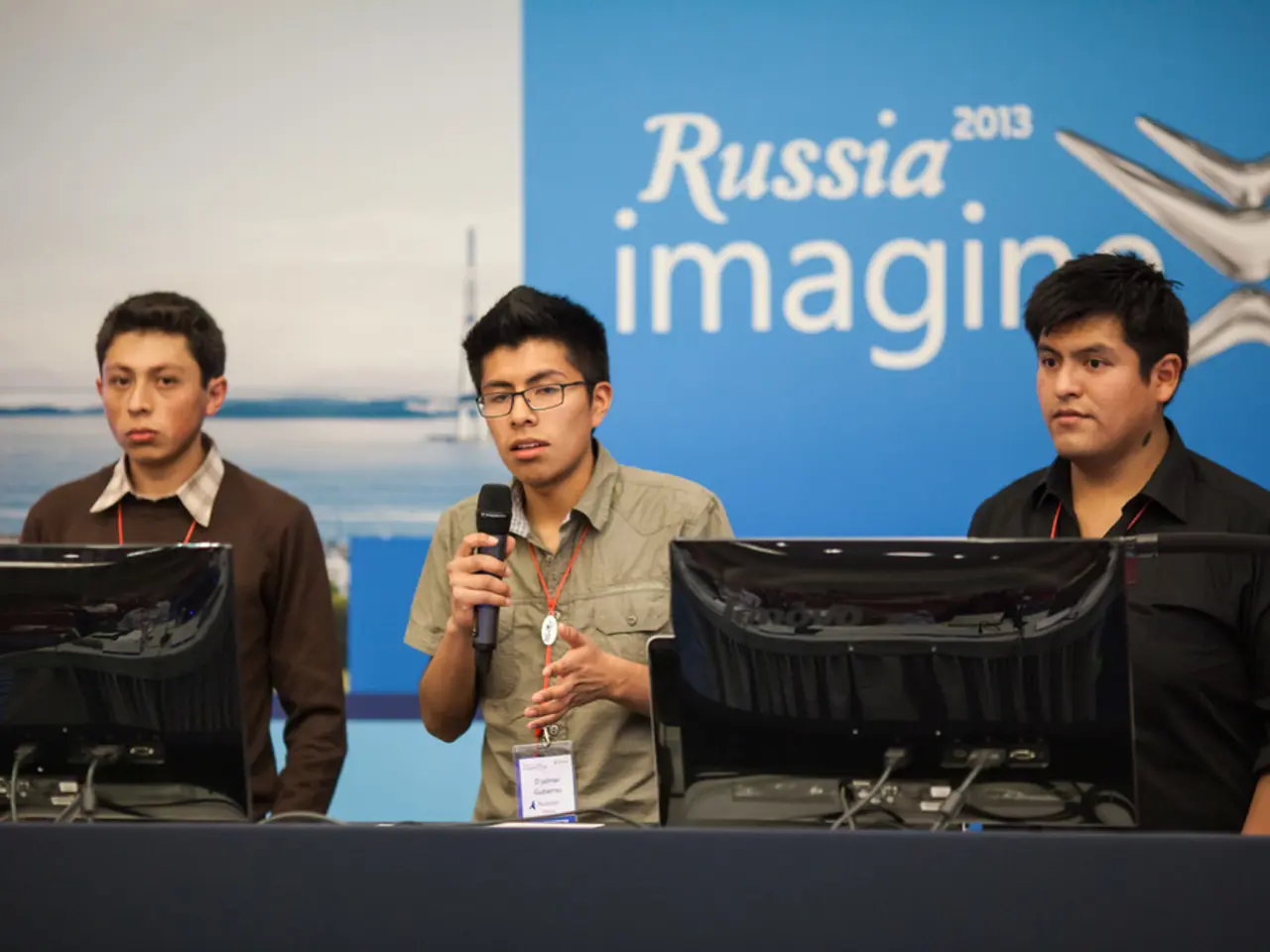Exploring Quantum Computing's Latest Advancements: Merging Photonics, Atomic States, and Semantic Meaning
In the ever-evolving landscape of technology, a significant shift is underway as the synergy of neutral atoms and photonics promises to revolutionize various fields, including energy storage, superconductivity, and advanced photonics. This paradigm shift could signal a convergence of subjectivity and objectivity, as quantum computing emerges as a medium for this unique synthesis.
The quantum computing industry is currently experiencing a phase of innovation, with Dr. Pravir Malik leading the charge as the head of the Forbes Technology Council group for Quantum Computing. Dr. Malik, also the founder and technologist of QIQuantum, is a prominent figure in this field, recognised for his significant contributions and notable personal and professional achievements.
One company at the forefront of this revolution is Xanadu. Their Borealis system demonstrated quantum advantage in Gaussian boson sampling in 2022, while their Aurora system, comprising 35 modular photonic chips, generates massive entangled states and facilitates real-time error correction and fault tolerance at room temperature. Xanadu's position as a leader in scalable photonic quantum computing is further solidified by their development of the photonic Gottesman-Kitaev-Preskill (GKP) qubit.
However, the story doesn't end with photonic quantum computing. Advancements in neutral-atom quantum computing are accelerating, with companies like QuEra demonstrating prolonged coherence times, scalability, and precision in manipulating atoms. According to the QIQD framework, a new approach detailed in a Springer Nature book, computation in meaning leveraging photonic and neutral atom computing becomes possible.
In this framework, atoms embody fourfold or quaternary energetic imprints defined by parameters such as frequency, amplitude, phase, and polarization. Meanwhile, photonic systems, particularly those employing qumodes, emerge as superior computational mediums. Intriguingly, "meaning" can be encoded in the continuous parameters of light interacting with atoms.
The dynamism in the quantum computing industry may be driven by this broader paradigm shift, as nature itself computes through the interaction of forms with light, establishing a quantum computational process. The shape of matter or life is influenced by subjective forces that determine form and meaning, suggesting that the convergence of photonic quantum computing and neutral atom arrays charts a bold and expansive trajectory for the future of quantum technology.
This convergence could lead to combining signatures of elements known to be chemically incompatible, potentially opening up a world of possibilities in various fields. The implications are vast, and as the industry continues to evolve, we can expect to see groundbreaking advancements in the realm of quantum technology.
Dr. Pravir Malik, as the head of the Forbes Technology Council group for Quantum Computing and founder of QIQuantum, is leading the innovation in the quantum computing industry, contributing significantly to the field. Meanwhile, the integration of science, particularly photonic and neutral atom computing, is revolutionizing various sectors, like health-and-wellness through fitness-and-exercise technologies, due to the proposed convergence of photonic quantum computing and neutral atom arrays.




